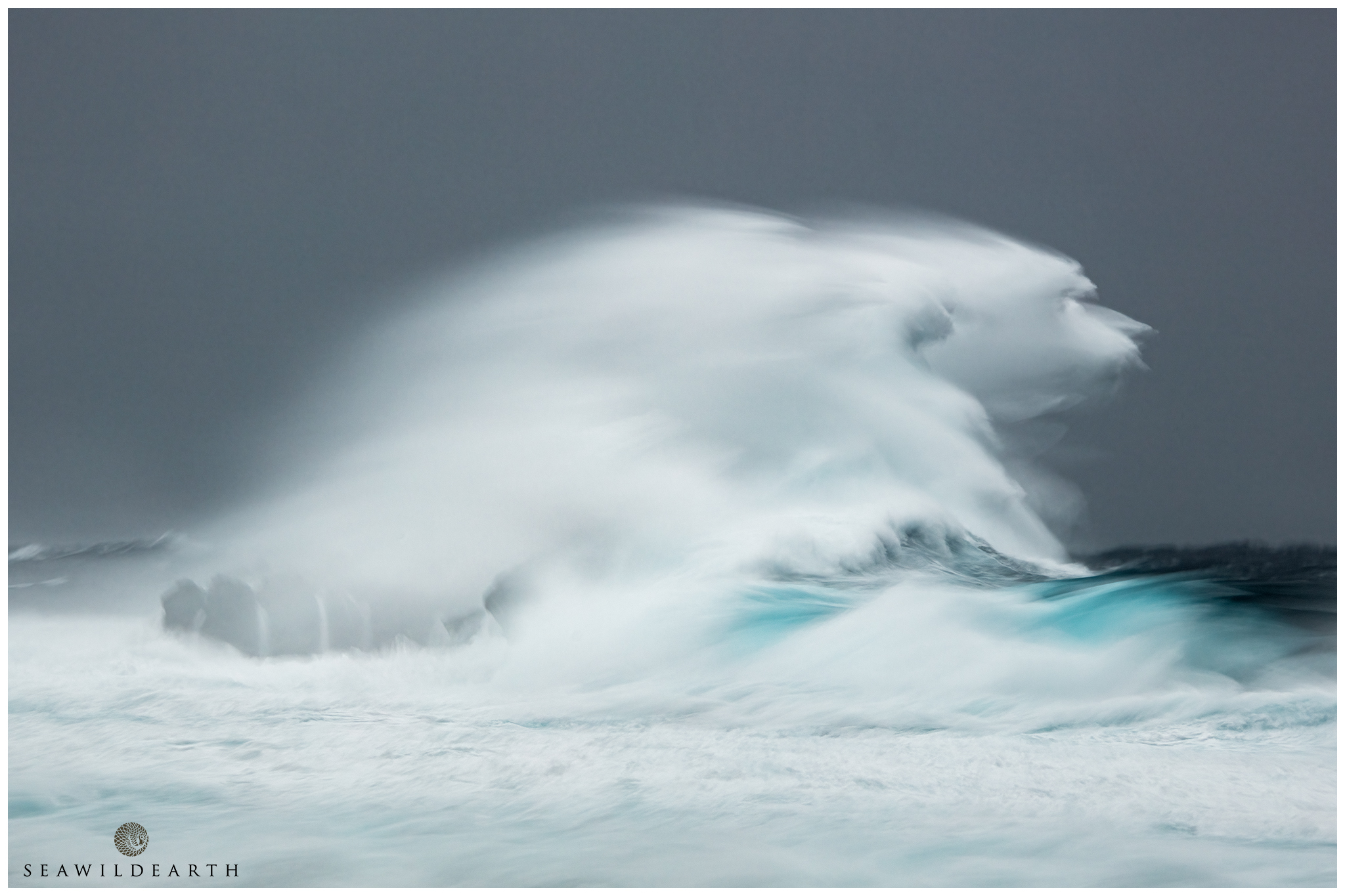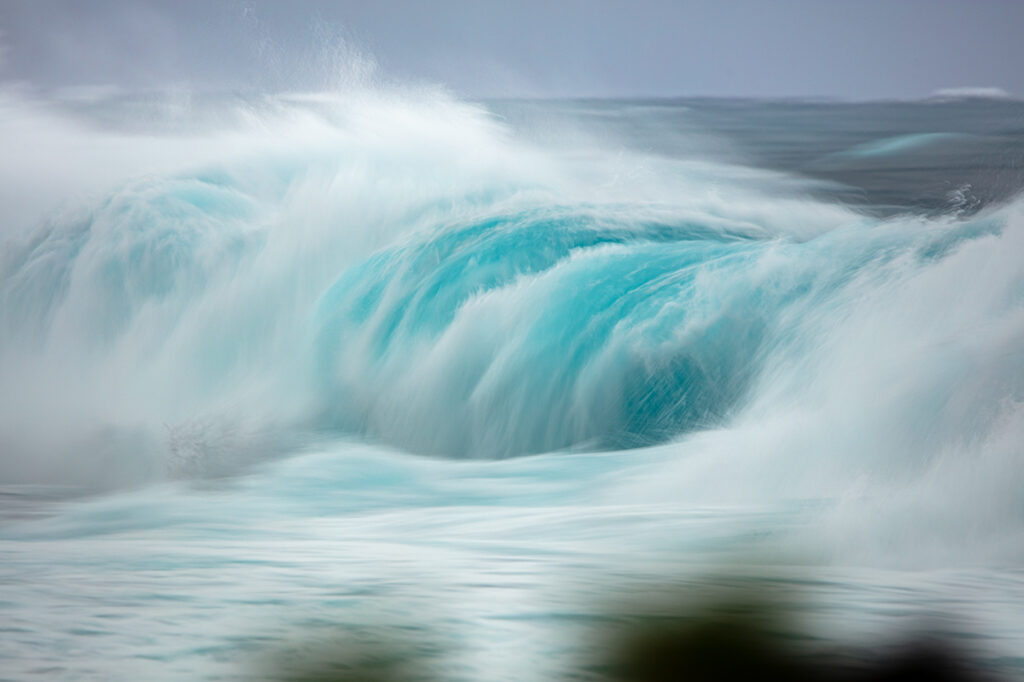Polar Bears in Okinawa?
I couldn't believe my eyes at first, but as the mist from the pounding surf cleared there it was, right in front of me, clear as day on the LCD screen of the camera.
Polar Bears in Okinawa? Surely my eyes were deceiving me? How could the image be lying to me, the playback image on my DSLR couldn't lie, could it? Over the past few days we have been having some incredibly heavy Ocean swells hitting Okinawa. If nothing else it gives rise to some incredible imaging adventures. With a decision to shoot slowing shutter speed imagery of the impressive waters around Cape Zampa, I set off in search of compositions. I knew where I was headed though. A place where with my Tamron 150-600mm zoom I could line up on some rocks just offshore which are of a size to ensure dynamic impacts from the waves that would result in some awesome spray, and where there is spray there is the potential for awesome imagery.

At first, I thought Baboon, but then I saw the same Polar Bear that everyone responded with when they first saw the shot.
This vantage spot from where I shot the image was a place I had visited on the previous large swell days. Since then I'd been kicking myself to return as the majority of the imagery I had shot during my last trip here was useless, unusable due to blur. I always lock my camera down on a video tripod when winds are elevated but the fact that my shots from the previous time at this spot were blurred highlighted a couple of issues. Firstly, the issue was pretty obvious; my tripod was not steady enough in the winds at the time, and as such small vibrations on the camera were enough to create blur. Beyond that, I also thought the potential for blur was 'travel' or breathing between the optical elements during the 1/4 second shutter speed I'd set on the camera. To accomplish that shutter, even though the day was overcast, I was shooting at 600mm, and f16 I needed to break out a six-stop ND64 filter at ISO320. To overcome the issue of the tripod motion, I took a large ziplock bag, three-quarters filled with rice to create a nice homemade beanbag.

Cape Zampa always puts on a show, without a doubt, whenever the swells are getting big. I often go there if for nothing more than simply wave-watching. It's hard to do that however without a camera at hand as the dynamic of the raging seas is just too much to bear for the avid Ocean photographer. That said, my wife finds it hard to comprehend how I can happily sit for hours in front of a raging Ocean and just take it all in. It's cathartic.
Beanbags are awesome and supremely cost-effective. Happy was I as I inspected the edited image while chowing down on a Japanese curry made with rice I'd used to shoot the image. Waste not, want not.
As you can probably surmise the image, and the solution to the problem of blur, both came out great. Cape Zampa delivered yet again. At one of the many little vantage points I use for my imaging exploits this one is now firmly etched into the knowledge base for further use.
It does take a little while to get the camera sitting completely 'so' for any shots to be taken, but it's definitely worth the effort. I would, if not shooting something as dynamic as crashing waves where timing is king, I would also suggest using mirror lock-up so that there is absolutely no shake or vibration from the action of actuating the shutter release button on your camera. On some cameras, you have the option to set that delay between the mirror locking up and the release of the shutter. I normally set mine to 2 seconds. By careful observation, there are also other potential indicators to forewarn you of an impending impact. In this case, there is another rock, just out of the composition, on which the same waves impact about 8 or so seconds before slamming into the rock in the main picture above. I would wait for an impact on the smaller rock and then count down depending on the kind of effect I would like to get with my shot. In the case of this image I waited until the plume had almost hit its apex where the wind would collect and disperse the water as spray. It is that spray that eventually created the 'Polar Bear' that we all see in the image. Can't we?
"Only we humans make waste that nature can’t digest".
Charles Moore - Oceanographer
About the Author
Internationally recognized as a provider of quality mixed media Mark Thorpe is always on the search for captivating content.

Photographer / Cameraman
Mark Thorpe
Emmy Award Winning wildlife cameraman and Internationally published landscape photographer Mark Thorpe has been an adventurer since he could walk! Spending 17yrs as an Underwater Cameraman at the start of his imaging career the highlight of which was being contracted to work with National Geographic. In that role as a field producer and cameraman he's been privy to a mixed bag of hair raising adventures. For some reason he was always selected for projects relating to large toothed marine predators such as Great White and Tiger Sharks, Sperm Whales and Fur Seals. Additionally he has also been active within Southern Africa on terrestrial projects dealing with a wide array of iconic wildlife.
Currently based in Okinawa, Japan he's always on the lookout for his next big adventure. He shares his exploits online with a totally organic social audience. Sponsored by a number of photographic industry manufacturers he is constantly scouring the islands for captivating landscape and 'Oceanscape' compositions. Videography wise he continues to create short photographic tutorial videos as well as content to promote the diversity of wildlife within the Okinawa prefecture as well as a growing lean towards matters of conservation and responsible environmentalism.
Mark has long been an advocate of simplified living. Fortunate enough to have a partner whom shares that vision he is increasingly vocal about what he perceives to be the requirement for man to change his ways. He advocates for people to change and adopt what he calls a true L.I.F.E or Low Impact Focused Existence in order that future generations also have the opportunity to enjoy the natural wonders of this planet to the same extent that his generation has. There is a growing sense of need for such a radical change.
